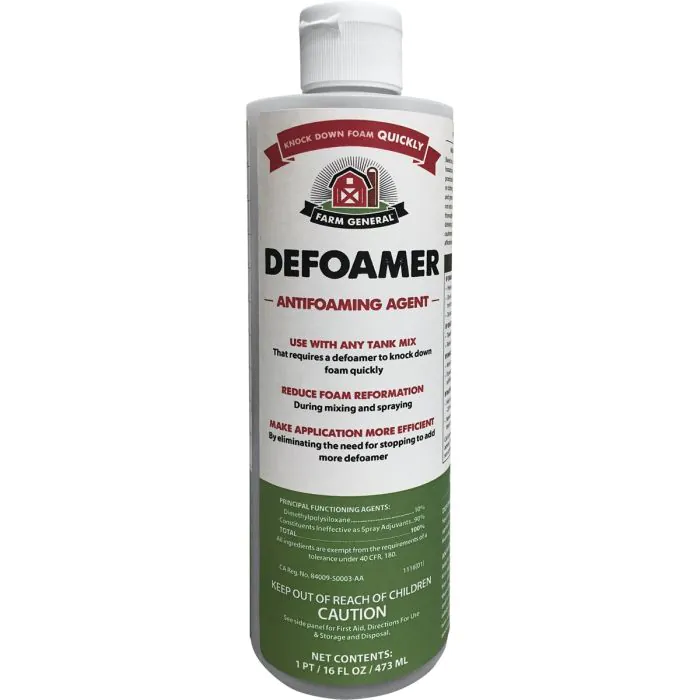The Significance of Utilizing a Chemical Defoamer in Numerous Applications
The application of chemical defoamers is a crucial consideration across multiple markets, including food processing, wastewater treatment, and pharmaceuticals. These agents play an essential duty in mitigating foam development, which can prevent efficiency and compromise item high quality. The advantages of utilizing defoamers prolong past simple aesthetic appeals; they are important for achieving compliance with sector standards and improving functional procedures. Nevertheless, the mechanisms by which defoamers function and their specific applications increase additionally concerns regarding their overall impact and effectiveness in these varied contexts. What understandings can be discovered about their use?
Comprehending Foam Formation
Foam development is a complicated physical phenomenon that takes place when gas bubbles are caught within a fluid matrix, causing the production of a secure framework. This process can be affected by various variables, including the thickness of the liquid, the surface area tension at the gas-liquid user interface, and the existence of surfactants. Surfactants lower the surface area stress, promoting bubble production and stabilization, which usually causes the formation of foam in lots of industrial procedures.
Foams are commonly run into in applications such as food production, wastewater therapy, and chemical manufacturing. In these contexts, foam can function as an insulator, interfere with mixing procedures, or impede the efficiency of tools. The stability of foam is figured out by the equilibrium between the pressures acting to stabilize the bubbles and those that promote their collapse.
Recognizing the auto mechanics of foam development is important for properly managing its visibility in various systems. By comprehending the underlying concepts, industries can develop approaches to reduce undesirable frothing, thus improving functional efficiency and product top quality. This foundational understanding offers as a forerunner to exploring the utility of chemical defoamers, which especially address foam-related challenges in many applications.
Advantages of Chemical Defoamers
Chemical defoamers use substantial benefits throughout different markets by successfully lowering and regulating foam development. By lessening foam, chemical defoamers assist preserve ideal production rates and reduce downtime associated with foam monitoring.
In addition, chemical defoamers add to enhanced item high quality. Frothing usually leads to disparities in formulas, which can adversely impact the end product. By controlling foam degrees, defoamers make certain harmony, thus enhancing the overall top quality of the outcome.
Cost-effectiveness is one more notable advantage (Chemical Defoamer). By reducing the amount of raw materials required for production and reducing waste, chemical defoamers can bring about considerable savings. They usually enable for reduced power consumption, as procedures can run much more efficiently and need less treatment.
Applications in Food Handling
In the food processing sector, efficient management of foam is necessary to guarantee both item high quality and functional effectiveness. Foam can hinder different processes, from mixing and mixing to product packaging, resulting in lowered returns and potential contamination. Chemical defoamers play a critical function in minimizing these problems by promptly breaking down foam, enabling smoother procedures and enhanced item uniformity.
In applications such as dairy handling, defoamers protect against excess foam formation throughout the production of yogurt, milk, and cheese, which can disrupt machinery and impact the appearance of the end product. In developing and fermentation procedures, foam control is essential to preserve the honesty of the drink and ensure ideal fermentation prices.
In addition, chemical defoamers are utilized in food sauces, solutions, and dressings to boost the security and look of the end products. By reducing foam during production, makers can achieve much better blending and diffusion of active ingredients, causing premium quality. Overall, the incorporation of chemical defoamers in food processing is click here for more important for preserving effectiveness, high quality, and security in food production.
Function in Wastewater Treatment
Effective foam management is equally important in wastewater treatment procedures, where too much foam can prevent procedures and make complex the treatment of effluents. In numerous wastewater treatment facilities, foam can develop as a result of biological activity, surfactants, or various other natural products present in the influent. This foam can result in a variety of functional obstacles, consisting of decreased treatment efficiency, raised upkeep demands, and prospective regulatory conformity concerns.
Chemical defoamers Resources play an important function in reducing these difficulties. By lowering the surface area tension of the fluid, defoamers advertise the collapse of foam structures, hence promoting smoother operation of equipment such as aeration containers and clarifiers. Their timely application aids preserve optimal hydraulic problems, enhancing the overall performance of solids separation processes.

Influence On Drug Manufacturing
Foam control is vital in pharmaceutical manufacturing, where the visibility of extreme foam can interrupt producing processes and compromise product quality (Chemical Defoamer). The development of foam throughout numerous stages, such as blending, blending, and fermentation, can result in inefficient mixing, poor warmth transfer, and also devices damage. These issues not just cause functional delays but can additionally create considerable monetary losses and affect conformity with rigorous regulative requirements
Chemical defoamers are specifically created find out here to minimize these difficulties. By efficiently reducing foam development, they improve process performance and keep the stability of the final product. Particularly, defoamers guarantee regular dose kinds, enhance the stability of solutions and suspensions, and improve cleansing processes by preventing foam accumulation in devices.
Additionally, the usage of defoamers can enhance the return of energetic pharmaceutical ingredients (APIs) by advertising much better removal and purification procedures. As pharmaceutical business make every effort to improve item top quality while lessening production expenses, the role of chemical defoamers ends up being increasingly essential - Chemical Defoamer. Their incorporation right into manufacturing procedures not only supports conformity with Good Production Practices (GMP) but likewise fosters advancement and competition in a quickly advancing industry

Final Thought

Chemical defoamers provide substantial advantages throughout various markets by effectively lowering and regulating foam formation. By lessening foam, chemical defoamers aid preserve optimum production prices and lower downtime linked with foam monitoring. Chemical defoamers play a critical role in alleviating these concerns by rapidly damaging down foam, permitting for smoother operations and improved item consistency.
Efficient foam monitoring is equally crucial in wastewater therapy procedures, where excessive foam can impede procedures and complicate the treatment of effluents.Foam control is vital in pharmaceutical manufacturing, where the presence of extreme foam can interfere with making processes and compromise item quality.